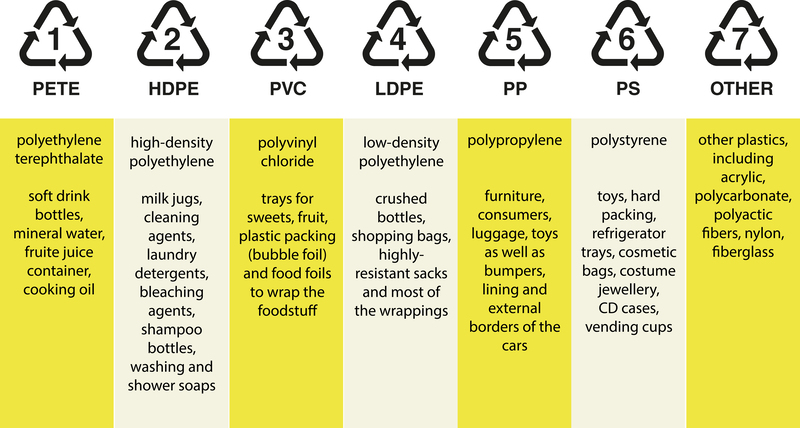Exploring Historical Waste Management Tactics
Waste management is a cornerstone of modern society's quest for sustainability, public health, and urban development. But have you ever wondered how ancient civilizations tackled their waste problems? Exploring historical waste management tactics reveals a fascinating tapestry of ingenuity, cultural adaptation, and early environmental stewardship. In this article, we'll delve deeply into the origins, evolution, and legacy of early waste control strategies--from the rudimentary dumps of ancient communities to the sophisticated sanitation systems of classical cities. Join us as we unearth the critical milestones in human efforts to manage waste and how these historical waste management practices continue to influence modern strategies.

Table of Contents
- Origins of Waste Management in Prehistoric Societies
- Waste Disposal in Ancient Civilizations
- Medieval Era Waste Strategies
- Renaissance Innovations and Urban Growth
- Industrial Revolution and Urban Waste
- Legacy and Lessons for Modern Waste Management
Origins of Waste Management in Prehistoric Societies
Exploring the roots of waste management takes us back to the prehistoric era when hunter-gatherer tribes moved seasonally and produced very little waste. Their environmental footprint was minimal, but evidence from ancient middens (waste heaps) shows that early humans found ways to deal with organic refuse, broken tools, and other detritus.
Naturally Sustainable Practices
- Organic decomposition: Most waste was biodegradable--bones, shells, plant material, and ashes. Nature handled organic waste efficiently since populations were small and scattered.
- Scavenger animals: Species like dogs and birds assisted in breaking down food scraps, playing an integral role in early waste reduction.
- Early pit and midden creation: Archaeological discoveries of ancient middens across the globe indicate that prehistoric people deliberately piled waste in centralized areas, the earliest forms of landfills.
Such prehistoric waste disposal methods show that the fundamentals of grouping waste and letting it degrade naturally were employed, albeit unintentionally.
Waste Disposal in Ancient Civilizations
With the rise of agriculture and permanent settlements, waste management problems grew more complex. Historical waste disposal practices took new forms in ancient civilizations, which developed increasingly sophisticated tactics to preserve public health and sanitation.
Mesopotamia and Early Urban Waste
- Localized landfill use: The Sumerians and Babylonians constructed early dumps outside city walls, minimizing foul odors and contamination within communities.
- Clay tablets and texts: Writings from ancient Mesopotamia allude to city officials responsible for street cleaning and the regulation of solid waste.
Ancient Egypt: Innovations in Sanitation
- Manual waste removal: Workers employed baskets and carts to transport waste from households to desert sites.
- Recycling and repurposing: Broken pottery and construction material were often reused or ground down for other purposes, showing an early awareness of resource recovery.
The Egyptians also harnessed organic waste as fertilizer, supporting agriculture along the nutrient-poor Nile Valley.
Classical Greece and Rome: The Birth of Systematic Waste Control
- Street cleaning crews: Ancient Athens maintained workers called scavengers to collect and remove trash from public roads.
- First urban sewers: Rome's famed Cloaca Maxima (circa 600 BC), one of the world's earliest sewage systems, channeled both waste and stormwater out of the city.
- Strict regulations: Roman law prohibited dumping refuse directly onto streets, requiring citizens to cart it to designated disposal sites.
These ancient waste management methods marked an era of engineering ingenuity, setting the foundation for modern urban sanitation.
Medieval Era Waste Strategies
The collapse of ancient cities led to a decline in effective waste disposal. As populations migrated to new settlements and urban centers, mounting refuse once again became a major challenge.
Medieval European Cities
- Muckheaps and streets as dumps: In densely packed communities, trash was often tossed into alleys or open sewers, causing terrible odors and disease outbreaks.
- Night soil collectors: A unique occupation emerged: individuals who collected human waste from chamber pots (night soil) and carted it outside town, sometimes selling it as fertilizer.
- Civic ordinances: Growing awareness of public health dangers led city councils to pass laws against indiscriminate dumping.
Despite primitive methods, the rise of guilds and municipal governance introduced regulations and labor systems that improved collection and removed large-scale refuse, foreshadowing later developments.
Waste Management in Non-Western Cultures
- Japanese Edo period: The Japanese practiced elaborate composting and recycling of organic waste, transforming night soil into valuable agricultural fertilizer--an early example of a circular waste economy.
- Islamic cities: Cities in the Middle East maintained street sweepers and regulated marketplace waste, while also repurposing animal dung for fuel and building materials.
Exploring these historic waste management strategies highlights how culture, religion, and local resources shaped approaches to sanitation.
Renaissance Innovations and Urban Growth
The late Middle Ages and Renaissance ushered in renewed interest in urban planning, engineering, and public health. Waste management tactics from history evolved as populations surged.
Public Health Movements and Urban Reforms
- Closed sewers: Cities invested in covered drainage channels to carry waste out of towns, reducing the risk of plague and cholera.
- Street cleaning ordinances: Cities like Paris and London fined residents and businesses for littering, establishing paid street sweepers with carts and brooms.
- Early waste incineration: Experiments with burning trash began, especially in heavily congested areas where landfill space was scarce.
These historic waste removal solutions laid the groundwork for more systematic and science-driven approaches.
Industrial Revolution and Urban Waste
The dawn of the Industrial Revolution in the 18th and 19th centuries triggered massive urbanization, producing unprecedented piles of refuse. Historical waste disposal methods faced new challenges as consumer goods, packaging, and toxic byproducts proliferated.
Emergence of Modern Waste Infrastructure
- Municipal garbage collection: Cities like London established the first organized, state-run garbage services, collecting waste from homes and businesses and transporting it to designated dumps.
- Engineered landfills: Scientific understanding led to better engineered landfill sites, lined for groundwater protection.
- First waste incinerators: The late 19th century saw the introduction of large-scale incineration plants ("destructors"), targeting urban waste volume reduction.
Recycling and Resource Recovery
- Paper and metal recycling: Enterprising waste pickers and municipal programs began collecting rags, metal, and bottles for reuse.
- Composting movement: Gardeners and farmers experimented with composting kitchen and yard waste, echoing ancient tactics.
Through these efforts, the evolution of waste management strategies caught up with the demands of burgeoning cities and early environmentalism.
Legacy and Lessons for Modern Waste Management
A close look at historical waste management tactics uncovers a recurring theme: societies have always been challenged to balance growth, health, and ecological limits. From Neolithic middens to classical sewers and beyond, each era devised unique solutions based on available technology, resources, and social norms.
What Can We Learn from Historical Waste Practices?
- Resourcefulness: Ancient recycling and composting reflect a practical, circular view on resources--an approach being revived today in zero-waste and sustainability movements.
- Public health: Persistent plagues and epidemics prompted the development of sanitation infrastructure and civic responsibility, standards that underpin modern urban living.
- Adapting to scale: As populations grew, waste management had to modernize. Today, we face global challenges of plastic pollution, e-waste, and hazardous materials that require similarly innovative thinking.
- Environmentally-integrated solutions: Many historical societies worked with, not against, their ecosystems--a lesson that sustainable waste management must heed.
Conclusion: Bridging the Past and the Future
Exploring historical waste disposal tactics offers essential insights for future policy, technology, and culture. By studying the historic waste management methods of civilizations past, we gain inspiration and cautionary tales as we confront the mounting challenges of our own era. Emulating the resourcefulness and adaptability of our ancestors, while fusing it with science and innovation, remains key to building sustainable cities and protecting public health for generations to come.

Frequently Asked Questions about Historical Waste Management
-
What were the main waste management tactics in ancient times?
Ancient societies relied on methods like dumping waste outside city walls, using open or closed sewer systems, recycling materials, and manual garbage collection. -
How did ancient Romans manage sewage?
The Romans developed one of the earliest large-scale sewer systems, the Cloaca Maxima, which efficiently drained waste and stormwater from the city to the Tiber River. -
Did historical societies practice recycling?
Yes, recycling and composting were common in various cultures, including ancient Egypt and Edo-era Japan, who viewed organic waste and broken materials as valuable resources. -
How does historic waste management influence us today?
Modern waste management borrows heavily from past strategies, especially concepts like resource recovery, municipal collection, and the integration of public health into city planning.
If you enjoyed this deep dive, consider exploring more about historic urban planning, environmental technology, and sustainability to better understand the roots and future of effective waste control.